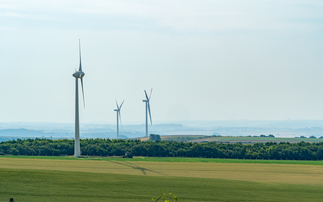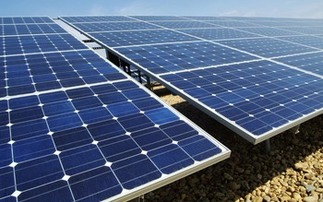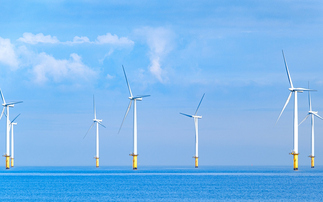In the latest addition to the BusinessGreen SDG Hub, we explore how businesses can help deliver on SDG7 and ensure universal and sustainable energy for all
The world is falling behind with its efforts to deliver on the seventh Sustainable Development Goal (SDG7), which aims to achieve universal access to sustainable energy by 2030.
Around one in eight people alive today lack access to modern electricity, while some 40 per cent still rely on wood, coal, charcoal or animal waste for cooking and heating. Investment in electricity remains some $20bn short of the estimated $52bn a year needed to provide electricity to all by 2030, while finance for clean cooking sits at less than one per cent of the $4bn needed to provide universal access by the same year.
But there are also enormous business opportunities provided by the goal, which encompasses large swathes of the green economy including renewables, energy efficiency, and electric vehicles (EVs).
Here are five top tips on how businesses can engage with, help drive, and benefit from SDG7 and the pursuit of universal energy access for all.
1. Forget the high carbon solutions
Under SDG7 there should be "affordable, reliable, sustainable and modern" energy for all by 2030. The goal studiously avoids saying that all energy should be renewable, with the renewable sub-target only aiming to "substantially" increase the share of renewables in the global mix. That leaves the door open for both nuclear power and potentially carbon capture and storage systems, alongside renewables.
However, it's worth remembering that the global market and technology context has changed substantially since the wording of the goal was set in 2015. In particular, the Paris climate accord was agreed later the same year, before being ratified in 2016. The IPCC's 1.5C report then increased the growing sense of urgency around climate change action still further. At the same time the rapidly falling cost of renewables and other low carbon technologies has increased their competitiveness all around the world.
At the time the goal was set, the use of the word "modern" was "sort of a code that would allow some fossil fuel energy sources, although mitigating for the worst emissions impact", Rachel Kyte, chief executive of the UN Secretary General's Sustainability For All (SEforAll) initiative, tells BusinessGreen. However, she says, the Paris Agreement, and the renewed scientific focus on the need to need to get to net zero emissions by around mid-century means there is a growing acceptance the SDG7 will have to met "cleanly".
"Paris... and the subsequent IPCC report have taken away any illusion that we are going to be embarking on an energy transition with high carbon intensity solutions: we're not," says Kyte. "I think the evolution over time has really just been about how clean this energy transition has to be."
That means there is no room in any credible SDG7 strategy for coal and negligible room for other forms of fossil fuels without either CCS or a clear vision for how 'bridging' fuels prove remarkably short-lived.
2. Ensure coherent goals
Unlike the Millennium Development Goals (MDGs), which were largely determined by OECD countries and international agencies, setting the SDGs involved a long negotiating process between representatives of UN member states, including middle-income and low-income countries.
The downside of this approach was what some have seen as a lack of consistency in making them all fit together. As such businesses cannot view SDG7 in isolation: they also need to consider how any strategy to achieve it affects other goals, advises Lucien Georgeson, researcher at the Oxford Martin School at the University of Oxford.
For example, progress on SDG7 could help reach respiratory health targets, for obvious reasons. On the other hand, a sudden, widespread rollout of large hydroelectric dams may help improve energy access, but without considering the other SDG goals it could lead to targets on water, land-use, agriculture and inequality being negatively affected, warns Georgeson. "It's an important concept for SDG7 because energy is so connected to everything else," he adds. "Sustainable and clean energy creates so many private sector opportunities, but still has risks for negative unforeseen consequences."
Since the SDGs were set, much effort has been put into understanding how they link together. The Stockholm Resilience centre has developed a "seven-step cross-impact matrix" to help governments and other actors untangle the influences of goals on one another and adopt systems thinking in their SDG strategies. A 2018 OECD report showed how many countries are setting about establishing policy coherence between the goals. These are tools that can easily be adapted by businesses working on their own SDG strategies.
3. Interrogate the data
Reflecting on what SDG7 actually means - and what it will take to achieve it - can also open up business opportunities.
In India, for example, the progress made on grid access has introduced new demand from households keen to consume more electricity, says Aayushi Awasthy from the University of East Anglia's Energy and Resources Institute, who is doing doctoral research on electrification in India. However, this grid-based electricity can be unreliable and may only be available at unhelpful hours.
"In this situation, microgrids (based on solar) has a real potential," she argues. "They can supply electricity in situations where electricity voltage or supply is not reliable." Such technologies would also reduce emissions and ease pressure on the grid at peak demand.
Kyte also notes that just because the government says electricity has reached a village it doesn't mean that there's electricity flowing into the house. "Unless someone's using electrons when they need to I don't think that counts," she says. "Universal access means that you can affordably access sustainable energy." The World Bank and others have worked to address this issue of defining energy access by developing a "multi-tier" ranking of energy access. Only Tier 3 or above is accepted by SEforAll as achieving universal access to sustainable energy.
It's worth noting that the Indian government has also been accused of meddling with their energy access numbers, which Awasthy says makes it difficult to check progress. "There is an issue of validation of numbers," says Kyte, noting that the SDG7 progress report, released last year, aims to validate government figures with household population surveys.
Understanding the data can help businesses and investors recognise where investment is required most and where the best market opportunities lie.
4. Remember the opportunities
Energy efficiency and clean energy will both be trillion dollar industries by 2030, according to the Better Business, Better World report, a 2017 study by the Business & Sustainable Development Commission exploring the growth opportunities that would flow from meeting the SDGs.
The report found that 17 of the biggest 60 market opportunities linked to delivering the SDGs related in some way to energy and materials, with a collective potential value of over $4.3tr by 2030. These opportunities included renewables expansion, carbon capture and storage (CCS), grid efficiency, energy storage, and increasing efficiency across intensive industries.
Of course, the positives of engaging with SDG7 also go wider than direct opportunities for investment and expansion. As the UN Global Compact points out, corporate success needs both the stable economies and the healthy and skilled workers the SDGs aim to achieve. Many companies joining the compact are also keen to increase public trust in them by committing to sustainability goals.
5. Manage the risks
There is also a flip side to this pursuit of SDG-related commercial gains: the dangers of not engaging with the SDGs are just as considerable. Firms that fail to take up the challenge could face rising risks as they are left behind in the energy transition.
"Thanks to the global goals, we now know what are the biggest, most important needs of mankind in the long-term perspective," says Claus Stig Pedersen, head of corporate sustainability at Novozymes. "This information... is extremely relevant to reflect on, and to think about what is our role..., what does our future as a business look like when we look into that future."
Of course, he says, alignment with SDG7 is easier for some companies than others. It is already at the core of business for many clean tech firms, while others may project being hit by high costs or new regulation as the SDGs mature. Meanwhile, carbon intensive businesses may find that their products will become increasingly unwanted in a sustainable future, leaving them exposed to the stranded assets that characterise the so-called carbon bubble. "[The more] you can recognise that, the more likely that you can change the company into something more meaningful and more purposeful and more fit for the future that 193 countries agreed for the world in 2015," adds Stig Pedersen.








